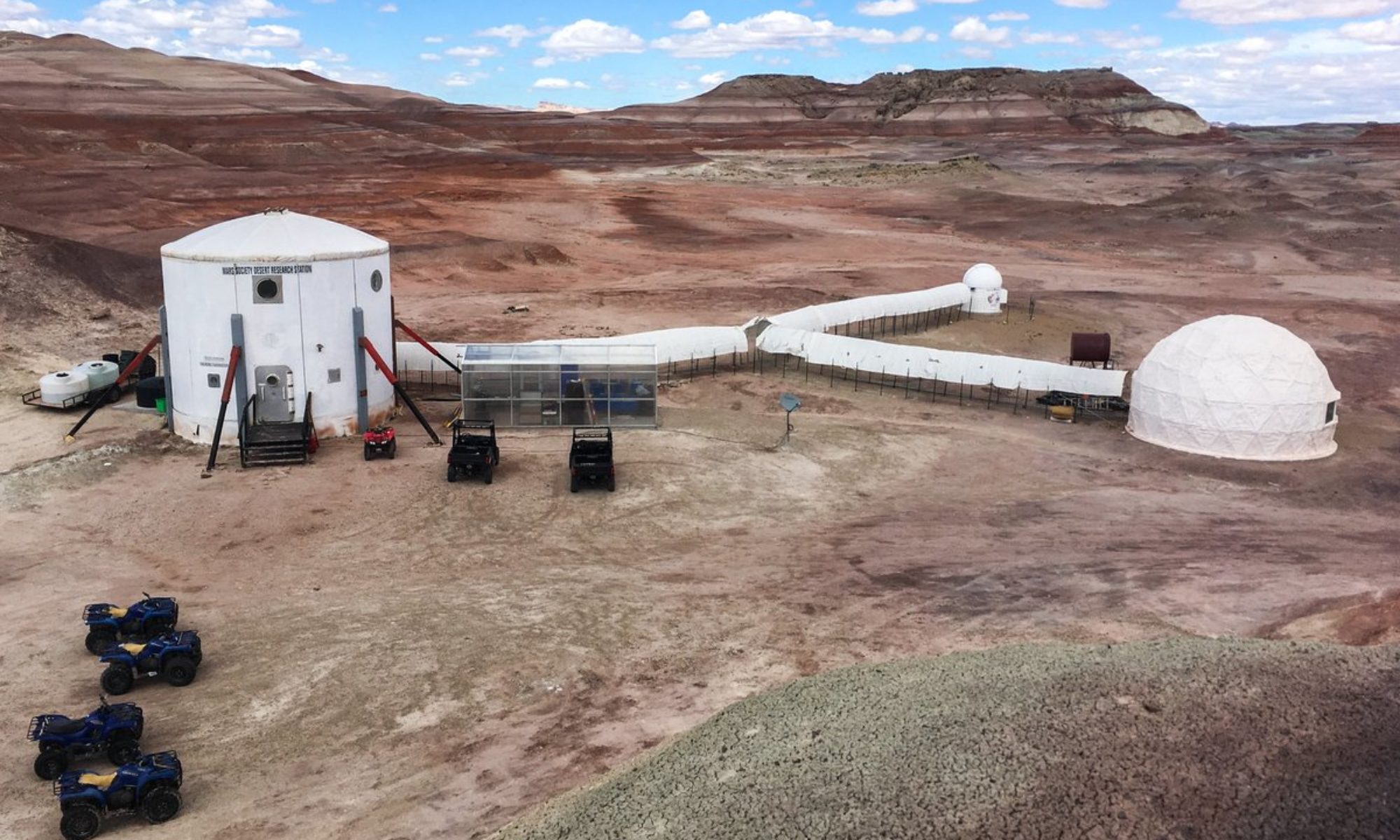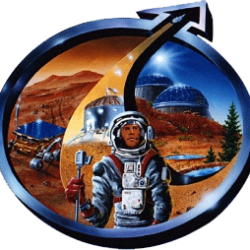Crew 314 Sol Summary Report 04-13-2025
Sol : 7
Summary Title : Whispers of a forgotten ocean.
Author’s name: Arnaud de Wergifosse (Crew Executive Officer)
Mission Status: ongoing
Sol Activity Summary: Sol after sol, the crew continues to push the boundaries of analog Martian exploration with resilience, focus, and scientific curiosity. The morning began with final EVA preparations and a weather check under clear skies and mild winds.
At 09:37, four crew members exited the airlock after standard decompression procedures to carry out a field mission in the Sea of Shells region. Among them was GreenHab Officer Bérengère Bastogne, who aimed to collect two soil samples from this geologically rich area for her fungi-based research. The site, thought to have once been covered by an ancient Martian ocean, offered both symbolic and scientific value. She was joined by Crew Engineer Antoine, tasked with inspecting his deployed equipment after it had been exposed to intense wind conditions the day prior.The EVA team was split between two rovers: Curiosity (Arnaud and Bérengère) and Opportunity (Antoine and Béatrice). Shortly after departure, Mission Support issued a reminder to reduce rover speed in order to conserve battery for the full route.
After checking in at several intersections, the team reached the vicinity of their target area around 10:20. While on site, they conducted geological sampling, explored the surrounding terrain, and deployed the drone to capture aerial imagery. Due to the local topography, radio contact with the Hab was lost after 09:57, though GPS tracking remained active throughout the EVA. The team began their return journey at 11:20 and successfully re-established communication at 11:40 upon reaching the Cow Dung Road and Galileo Road intersection. There, they performed a brief inspection of Antoine’s equipment and shared a status update with CapCom.
The EVA concluded with the crew safely returning to the MDRS at 11:55. Antoine and Béatrice alternated as drivers for Opportunity, while Arnaud continued as driver of Curiosity. All mission objectives were accomplished, marking another efficient and productive sol of surface operations.
Later in the day, the crew took time to unwind with a group workout session, helping to relieve both the physical fatigue and mental tension accumulated throughout the sol. This was followed by a communal cooking session, where the team shared a warm meal—an enjoyable and grounding end to a demanding but fulfilling day.
Look Ahead Plan : Tomorrow, we will carry out Louis’s experiment, which requires the entire crew to participate in an EVA, meaning there will be two EVAs : one in the morning and another in the afternoon. His experiment, which began on Sol 4 inside the MDRS and will continue in the field on Sol 8, focuses on the interaction between humans and technology. For this purpose, he needs the crew to perform a series of movements, which will be recorded by a wrist-mounted portable device.
Anomalies in work: None was notified.
Weather: The day began with clear, sunny conditions in the morning, followed by increasing cloud cover in the afternoon. Temperatures ranged from 38°F to 79°F over the course of the day.
Crew Physical Status: Everyone was in good health today, with no issues reported.
EVA: Four crew members took part in today’s EVA, including GreenHab Officer Bérengère Bastogne, who collected two soil samples from the Sea of Shells as part of her fungi-related experiment. This site, once covered by an ancient ocean, offered a poetic backdrop to the mission. She was joined by Crew Engineer Antoine, who needed to inspect his installation following strong winds the previous day. The team left the MDRS at 09:37 after standard decompression, splitting into two rovers: Béatrice and Antoine in Opportunity, and Bérengère with EVA leader Arnaud in Curiosity. Mission Support reminded the team early on to reduce speed to preserve rover battery life.
The crew almost reached their destination at 10:20 after checking in at key intersections. While on site, they explored the area, collected samples, and used the drone to capture aerial images. Radio contact was lost after 09:57 due to poor signal but GPS tracking remained active. At 11:20, the team began their return and re-established contact at 11:40, upon arriving at the Cow Dung Road and Galileo Road intersection. There, they checked Antoine’s equipment and briefly reported their activities. The EVA concluded with the team safely heading back, with Antoine and Béatrice alternating driving duties in Opportunity, and Arnaud remaining at the wheel of Curiosity.
Crew was back at the station at 11:55.
Reports to be filed: Sol Summary, Journalist Report, GreenHab Report, Operations Report, EVA Report, EVA Request, Crew Photos, Astronomy Report.
Support Requested: Food requested by the crew was provided by the mission support

